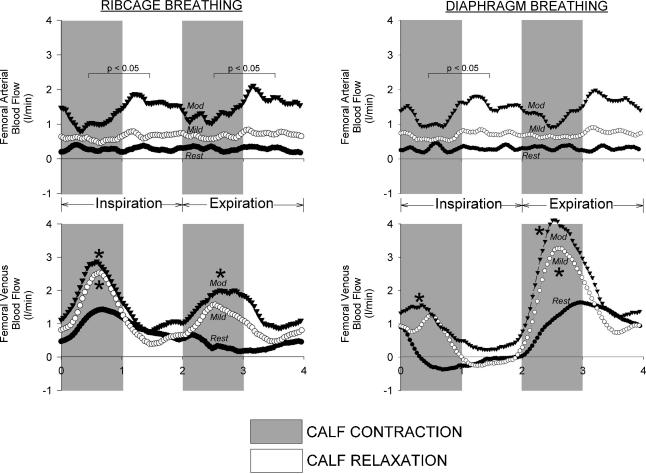Figure 6. Effects of ribcage breathing and diaphragm breathing on femoral arterial inflow and femoral venous outflow at rest and during mild and moderate calf contraction (traces represent the signal averaging of over 120 breaths per condition per subject).
Note that the only modulation of arterial inflow is during moderate levels of calf contraction where increases in intramuscular pressure during the concentric portion of calf contraction are great enough to compress the arteries and increase the impedance to arterial inflow. Additionally, only moderate levels of contraction were able to increase the mean femoral venous return during a diaphragmatic inspiration. These observations support the notion that increases in abdominal pressure are a powerful modulator of venous return from the lower limb, even during dynamic calf exercise. *P < 0.05 compared to resting conditions during the same breathing pattern (i.e. ribcage or diaphragm) and the same phase of the breath (i.e. inspiration or expiration).

